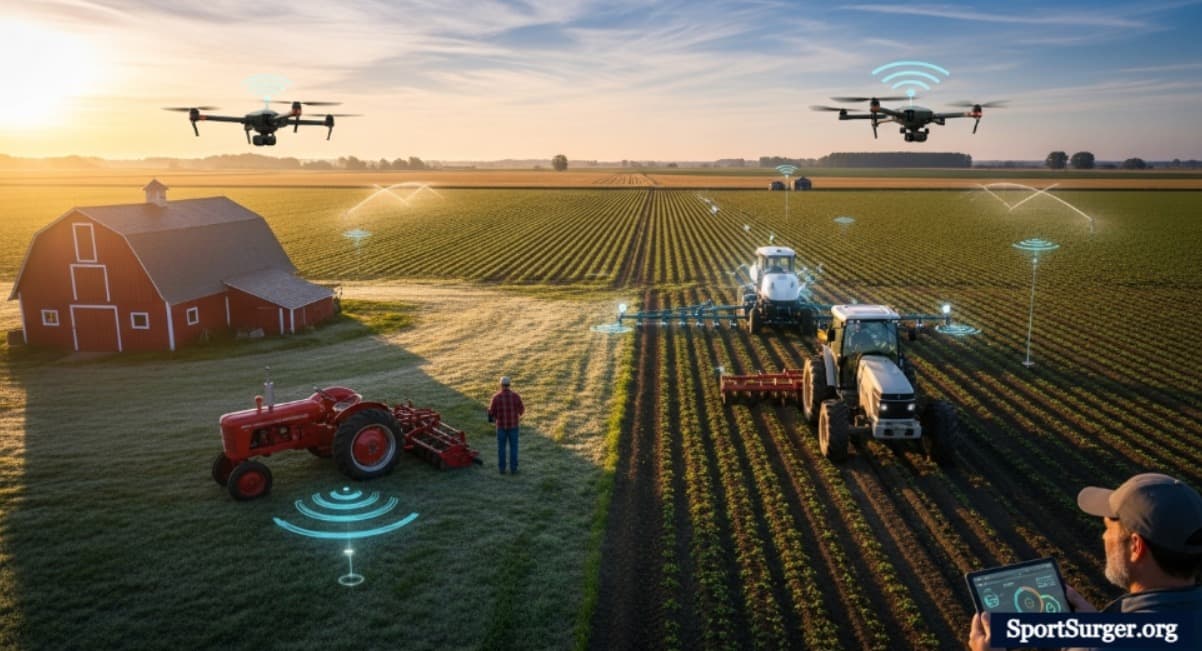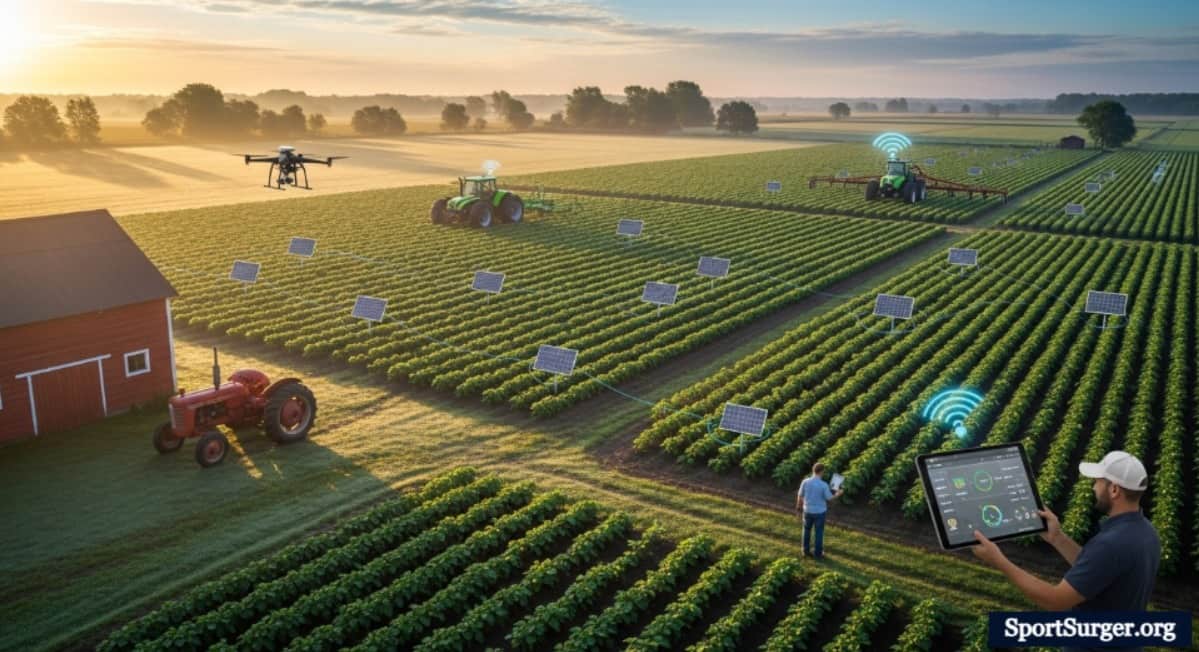Introduction
Farming has always been the backbone of human civilization. For centuries, farmers relied on experience, intuition, and manual labor to grow food and sustain communities.
But today, with the rise of modern tools and innovations, technology is transforming the way agriculture works.
Learning how to integrate technology with traditional farming is now essential for increasing productivity, conserving resources, and ensuring long-term sustainability.
Understanding the Need for Integration
Traditional farming methods are rich in wisdom passed down through generations. However, challenges like unpredictable weather, soil degradation, and limited resources make it difficult to meet modern food demands. By integrating technology with traditional farming, farmers can balance time-tested techniques with modern efficiency.
This integration doesn’t mean replacing traditional practices — it means enhancing them with smart solutions that make work easier, faster, and more sustainable.
Benefits of Integrating Technology with Traditional Farming
1. Improved Efficiency
Using technology in traditional farming allows farmers to save time and labor. Machines, drones, and automated systems can perform tasks like irrigation, fertilization, and harvesting more efficiently than manual methods.
2. Better Crop Management
With sensors and data analytics, farmers can monitor soil moisture, pH levels, and nutrient conditions in real time. This helps make better decisions about planting and irrigation schedules.
3. Cost and Resource Optimization
Technology reduces waste and optimizes input use. For instance, smart irrigation systems supply just the right amount of water, saving both resources and money.
4. Environmental Sustainability
Learning how to integrate technology with traditional farming also supports eco-friendly agriculture. Precision tools reduce pesticide use, promote soil health, and minimize environmental damage.
Key Technologies in Modern Farming
1. Internet of Things (IoT) in Agriculture
IoT devices like soil sensors, weather stations, and GPS trackers help farmers collect and analyze real-time data. This allows them to make informed decisions that increase yield and efficiency.
2. Drones for Monitoring and Spraying
Drones play a big role in modern farming. They can survey large areas, monitor crop health, and even spray fertilizers or pesticides evenly across fields — all in a fraction of the time it takes manually.
3. Artificial Intelligence (AI) and Machine Learning
AI tools can predict weather patterns, detect plant diseases early, and provide data-driven recommendations. These technologies help farmers plan better and minimize losses.
4. Smart Irrigation Systems
Traditional irrigation often leads to water wastage. With smart irrigation systems, sensors and software determine the right amount of water each crop needs, conserving resources and improving plant growth.
5. Farm Management Software
Technology offers digital platforms for managing farm records, expenses, and crop cycles. These tools allow farmers to track progress and make quick adjustments when needed.
How to Integrate Technology with Traditional Farming

Step 1: Assess Current Farming Practices
The first step in learning how to integrate technology with traditional farming is to evaluate your current methods. Identify areas where efficiency can be improved — such as irrigation, pest control, or soil management.
Step 2: Start Small
Farmers don’t have to adopt advanced technologies overnight. Begin with simple tools like mobile apps for weather forecasting or soil moisture sensors. Gradually scale up as you gain confidence.
Step 3: Choose the Right Technology
Every farm is unique. Small farms may benefit from affordable tools like handheld sensors, while larger farms might need drones or automated systems. Select solutions that fit your budget and needs.
Step 4: Train and Educate Farmers
Technology can only be effective when users understand it. Organize training sessions or workshops to help farmers learn how to use digital tools and interpret the data they collect.
Step 5: Combine Data with Experience
Traditional farmers possess invaluable knowledge about soil, seasons, and crops. Combine this wisdom with modern data insights to create a balanced, productive farming strategy.
Step 6: Monitor and Adjust Regularly
Technology evolves quickly. Keep track of results, make necessary adjustments, and explore new innovations that can further improve farming efficiency.
Real-World Examples of Technology and Traditional Farming Integration
Precision Agriculture in Action
In many countries, farmers are using GPS-guided tractors and drones to plant and monitor crops accurately. This blend of traditional planting knowledge and digital mapping helps achieve higher yields.
Smart Greenhouses
Traditional greenhouse farming is now being enhanced with automatic temperature and humidity controls. These systems ensure ideal growing conditions throughout the year.
Livestock Monitoring
Wearable devices for animals allow farmers to track health, feeding patterns, and movement. Combining traditional livestock care with smart monitoring ensures healthier herds and reduced losses.
Challenges in Integrating Technology with Traditional Farming
While the benefits are clear, the process also comes with challenges.
1. High Initial Costs
Some technologies, like drones and automated systems, can be expensive for small-scale farmers. However, costs are decreasing as technology becomes more widespread.
2. Lack of Technical Knowledge
Farmers unfamiliar with digital tools may find it hard to adapt. Regular training and community support programs can bridge this gap.
3. Connectivity Issues
Many rural areas still lack reliable internet access, which can limit the use of cloud-based tools or IoT devices. Governments and organizations must work together to improve digital infrastructure.
4. Resistance to Change
Some farmers are skeptical about replacing long-standing traditions with technology. Demonstrating successful examples and real-life benefits can help overcome this hesitation.
The Future of Farming
The future of agriculture lies in the successful balance between tradition and innovation. The goal is not to erase traditional farming but to strengthen it with modern tools.
In the coming years, technologies like robotics, blockchain, and smart sensors will continue to reshape agriculture. But the heart of farming — respect for nature and dedication to growth — will remain unchanged.
By understanding how to integrate technology with traditional farming, we can ensure food security, sustainable practices, and a brighter future for generations to come.
Tips for Farmers Looking to Embrace Technology
- Stay informed: Keep learning about new farming tools and software.
- Join agricultural communities: Engage with other farmers who use technology successfully.
- Seek government support: Many governments offer grants and programs for modern farming adoption.
- Focus on sustainability: Choose eco-friendly technologies that support long-term growth.
- Don’t abandon traditions: Combine your heritage methods with data-driven insights for the best outcomes.
Conclusion
Integrating technology with traditional farming isn’t just about modernization — it’s about progress with purpose. By blending age-old wisdom with smart innovations, farmers can grow more efficiently, protect the environment, and sustain future generations.
The journey begins with small steps — adopting a sensor here, using an app there — but the results can be transformative. The key is understanding how to integrate technology with traditional farming in ways that respect both innovation and tradition.

